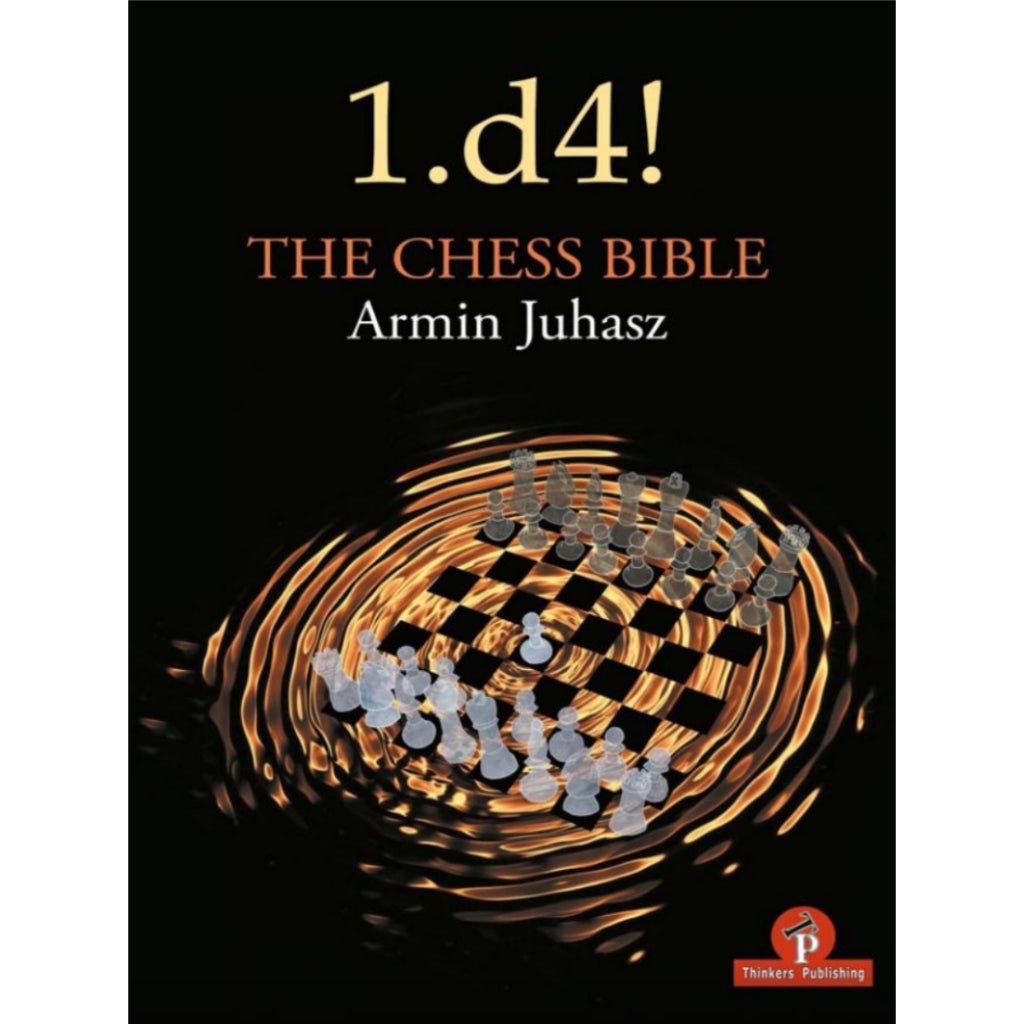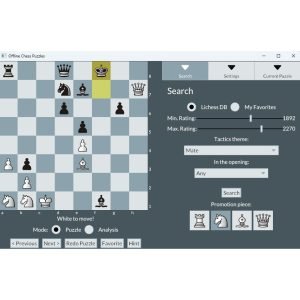Modern Chess Expert Repertoire against the Italian – Part 2 by GM Michael Roiz
Original price was: $ 100.$ 3Current price is: $ 3.
OFF - 97%9999 in stock

Description
Reviews (4)
Description
We have the pleasure of presenting the second and final database of GM Roiz’s repertoire against the Italian – Expert Repertoire against the Italian – Part 2.
The starting position of the entire Italian project arises after 1.e4 e5 2.Nf3 Nc6 3.Bc4 Nf6

While Part 1 was dedicated to the sharp continuations 4.Ng5 and 4.d4, the current database deals with the most popular 4.d3. The starting position of the current repertoire is reached after 4…Bc5.

This position is constantly being tested on every level. Almost all top players have it in their repertoire for both colours.
While it’s very difficult to avoid theoretical discussions, the repertoire suggested by Roiz is very much based on logic and understanding. When possible, he proposes setups with …d7-d6, …a7-a5, and …Ba7. By choosing such a reliable setup, Roiz sidesteps a lot of annoying nuances related to the move order.
The database consists of 10 theoretical chapters, 10 interactive test positions, a Memory Booster, and a Video Version (2h Running Time).
Now, we shall briefly mention some of the highlights of this product.
In the beginning, Roiz examines the setups with Bg5. The main starting point of Chapter 1 and Chapter 2 arises after 1.e4 e5 2.Nf3 Nc6 3.Bc4 Nf6 4.d3 Bc5 5.Bg5 h6 6.Bh4 d6 7.c3 a5

The advance …a7-a5 is typical for all the systems in this line. Besides securing the a7-square for the bishop, Black prevents his opponent from expanding with b2-b4. In Chapter 1, Roiz examines White’s attempts to play this position without castling short. It’s not a surprise that Black does not face any problems in this case.
The main move 8.0-0 is examined in Chapter 2. In this case, Black’s most flexible continuation is 8…Ba7.

Very often in this line, Black starts expanding on the kingside by means of …g7-g5 with or without …0-0. At this point, Roiz examines 4 continuations – 9.Na3, 9.a4, 9.Re1, and 9.Nbd2.
In his annotations to Chapter 2, the author proves that Black is doing fine in the arising complex positions.
In the next 2 chapters, Roiz analyzes the advance b2-b4. The position of interest is reached after 1.e4 e5 2.Nf3 Nc6 3.Bc4 Nf6 4.d3 Bc5 5.c3 d6 6.b4 Bb6

The advance b2-b4 is a speciality of GM Baadur Jobava. White grabs space on the queenside and secures c4 for his knight. On the downside, weakening c3 might tell in the long run, especially if Black can play the freeing …d6-d5. After castling, Black’s plan includes the manoeuvre …Ne7-g6. Afterwards, Black is planning to proceed with …c7-c6 followed by …d6-d5.
In Chapter 3, Roiz covers White’s attempts to play this line without the advance a2-a4. As you will see in the annotations to the current chapter, Black does not have any problems in all these lines.
Chapter 4 deals with the most common and natural move 7.a4. The main line goes 7…a5 8.b5 Ne7 9.0-0 0-0

At this point, Roiz deals with various attempts for White in this position. In most cases, however, Black’s strategy remains unchanged. He is planning to follow with the standard …Ng6 followed by …c7-c6 and …d6-d5. Black has more than enough counterplay in all the lines.
Chapters 5 and 6 are dedicated to the old main line arising after 1.e4 e5 2.Nf3 Nc6 3.Bc4 Nf6 4.d3 Bc5 5.c3 d6 6.Bb3

This is White’s 2nd choice. The bishop’s retreat is aimed at preventing the possible …Nc6-a5. Also, in case Black plays …Bc8-e6 White will be able to deviate from exchanging the bishops. On the downside, it costs White a tempo and limits active possibilities on the queenside, as the b2-pawn is blocked.
Once again, Roiz goes for 6…a5. At his turn, Black secures a7 for the possible retreat of this bishop and grabs some space on the queenside. While Chapter 5 examines White’s attempts to play without castling short, Chapter 6 features the positions arising after 7.0-0. In both cases, Black’s play is identical. Usually, his next three moves (with changed move order) include …h7-h6, …0-0, and …Be6. If Black knows what he is doing, he has no problem neutralizing White’s initiative.
Chapter 7 focuses on the position arising after 1.e4 e5 2.Nf3 Nc6 3.Bc4 Nf6 4.d3 Bc5 5.c3 d6 6.Nbd2 a5 7.Nf1

White wants to quickly transfer his knight to g3 by saving a tempo on 0-0. As you can imagine, however, this time-consuming operation will be not left without consequences. In most of the lines, Black overtakes the initiative by going for the well-timed central break …d6-d5.
The main position of Chapters 8 and 9 arises after 1.e4 e5 2.Nf3 Nc6 3.Bc4 Nf6 4.d3 Bc5 5.c3 d6 6.0-0 a5 7.Re1 0-0 8.Nbd2

By deviating from 8.h3 White is trying to save a tempo, although in some cases …Ng4 might offer Black active play on the kingside. In this case, we will play the standard 8…Be6 since our entire repertoire is based on this move. In this case, White’s most principled continuation is 9.Bb5, trying to make use of the weakened b5-square. The alternatives to 9.Bb5 are harmless. Roiz covers them in Chapter 8.
True to the entire logic of his suggested repertoire, Roiz answers 9.Bb5 with 9…Ba7.

Black moves his bishop in advance to meet the upcoming d3-d4. Later on, we are ready to follow with …Ne7-g6. The arising positions are strategically complex. Therefore, understanding of typical ideas is more important than knowing concrete theory. In the analysis to Chapter 9, Roiz demonstrates the resourcefulness of Black’s position.
In Chapter 10, Roiz focuses on the absolute main line – 1.e4 e5 2.Nf3 Nc6 3.Bc4 Nf6 4.d3 Bc5 5.c3 d6 6.0-0 a5 7.Re1 0-0 8.h3

The most flexible and common move. Keeping the knight on its initial spot makes it possible for White to play d3-d4 faster or sometimes place it on a3. In case White still goes Nbd2 there will be a transposition to previous Chapters. Roiz proves that Black can still play the thematic 8…Be6. The top-level practice as well as the strong engines prove that Black has decent counterplay in this line.
Reviews (4)
4 reviews for Modern Chess Expert Repertoire against the Italian – Part 2 by GM Michael Roiz
Leave a Reply











Zohar (verified owner) –
Another problem I faced was during my well-planned opening, sometimes opponent would bring the queen out
Phoenix (verified owner) –
he gives you basic principles that just works 90% of the situations – it sounded silly to me at first, but then it became a daily prayer
Ryan (verified owner) –
At this level this course covers a sweet spot.
Kevin (verified owner) –
Even above beginner level, knowing the first ten moves is usually sufficient, and the variations in this course average nine moves.